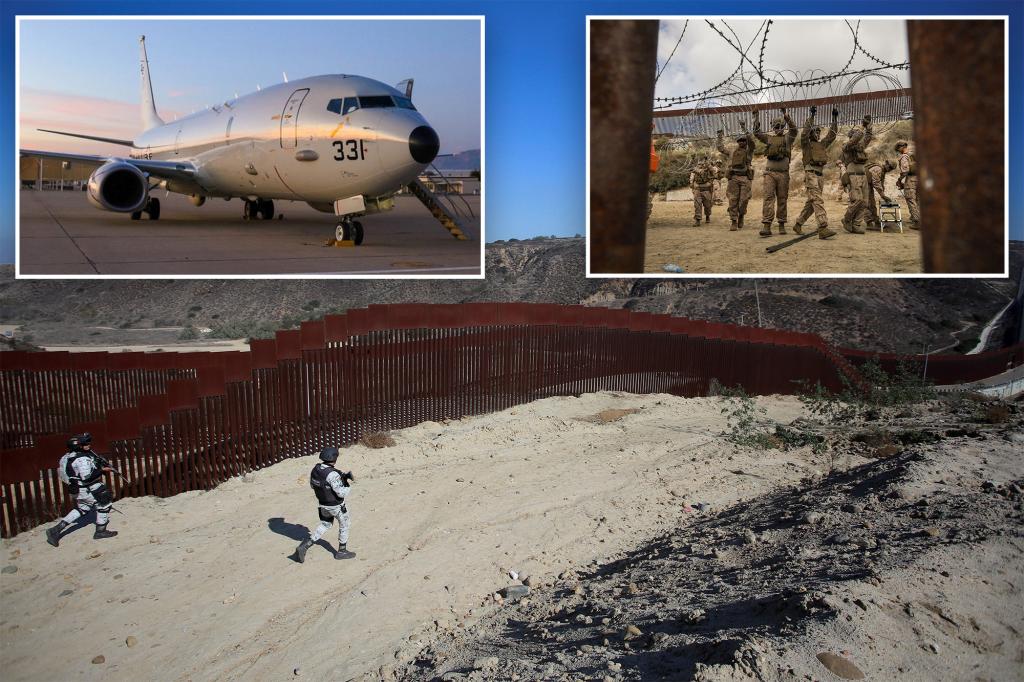World
Trump sends more ultra-hi-tech spy planes to target drug cartels along border

The US Deploys Advanced Spy Planes to Combat Mexican Drug Cartels
The United States has redirected some of its most advanced surveillance aircraft, typically reserved for monitoring adversarial nations like China and Russia, to target Mexican drug cartels. This strategic shift is part of President Trump’s aggressive crackdown on drug trafficking and border security. According to a recent report by CNN, the deployment includes high-tech planes such as the Navy’s P-8 Poseidon, equipped with cutting-edge radar systems, and the iconic U-2 spy plane, originally designed during the Cold War to gather intelligence on the Soviet Union. The use of a U-2 for counter-cartel operations marks a historic first, as military experts confirm that this aircraft has never been used for such a purpose before. Over the past two weeks, these planes have conducted at least 18 missions over the southwestern United States and international airspace near Mexico’s Baja Peninsula.
From Cold War to Cartel Crackdown: The U-2 Spy Plane’s New Role
The U-2, renowned for its ability to operate at extremely high altitudes and gather detailed surveillance, has been a cornerstone of U.S. intelligence operations for decades. Its primary role has historically been to monitor foreign adversaries, such as Russia and China. However, the ongoing escalation of the U.S.-Mexico drug war has prompted a reassignment of these resources. On February 3, a U-2 was deployed on a mission targeting cartel activities, signaling a significant expansion of U.S. counter-narcotics efforts. Meanwhile, the Navy’s P-8 Poseidon, a submarine-hunting aircraft, has also been integral to these operations, conducting 11 of the 18 flights reported. These missions highlight the Trump administration’s commitment to leveraging the U.S. military’s advanced capabilities to disrupt cartel operations.
A Surge in Surveillance and TroopDeployment
The increased surveillance efforts coincide with a broader intensification of U.S. counter-cartel strategies under President Trump. Between late January and early February, the U.S. conducted 10 days of intensive spy plane missions, a frequency previously seen only once a month. This surge in activity is part of a larger plan that includes the deployment of thousands of additional troops to the southern border. On his first day back in office after the 2024 election, Trump also designated Mexican drug cartels as foreign terrorist organizations, a move that underscores the administration’s tougher stance on the issue. The U.S. has further pressured Mexico to beef up its own security measures, with Trump threatening 25% tariffs unless Mexico deployed 10,000 soldiers to patrol its side of the border.
Escalating Violence and the Cartels’ Desperate Measures
The stepped-up U.S. military presence and surveillance have been met with increased violence from the cartels, who view the crackdown as a direct threat to their lucrative drug-smuggling operations. Border Patrol agents in Texas have come under fire from suspected cartel members in Mexico, while leaked memos reveal that cartels are now using kamikaze drones and explosives to target U.S. border agents. These tactics, described as desperate and deadly, reflect the cartels’ determination to resist the U.S. crackdown. Former ICE chief and current border czar Tom Homan warns that the situation is likely to deteriorate further, stating, “Do I expect violence to escalate? Absolutely, because the cartels are making record amounts of money.”
The Cartels’ Challenge to U.S. Authority
The use of advanced drones and explosives by the cartels represents a bold escalation in their conflict with U.S. authorities. These acts of aggression demonstrate the growing audacity of the cartels, which have historically targeted Mexican law enforcement but are now directly challenging the U.S. military. Homan, a seasoned expert on border security, acknowledges that while the cartels may view taking on the U.S. military as a risky move, their desperation to maintain control over lucrative smuggling routes may drive further violence. “I think the cartels would be foolish to take on the military, but we know they’ve taken on the Mexican military before. But now we have the United States military,” Homan told ABC News.
The Future of U.S.-Mexico Relations and Border Security
The deployment of advanced spy planes, combined with the increasing militarization of the U.S.-Mexico border, signals a new era of confrontation between the U.S. government and Mexican drug cartels. While the Trump administration’s aggressive tactics have drawn criticism from some quarters, they reflect a broader shift in U.S. policy toward treating cartels as a national security threat rather than solely a law enforcement issue. As the situation continues to unfold, questions remain about the long-term effectiveness of these measures and their impact on U.S.-Mexico relations. With tensions running high and violence escalating, the border remains a volatile and unpredictable theater in the war against drug trafficking.











